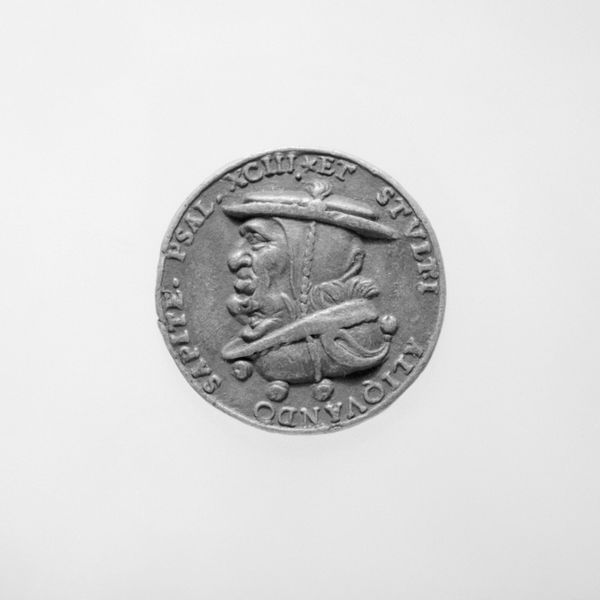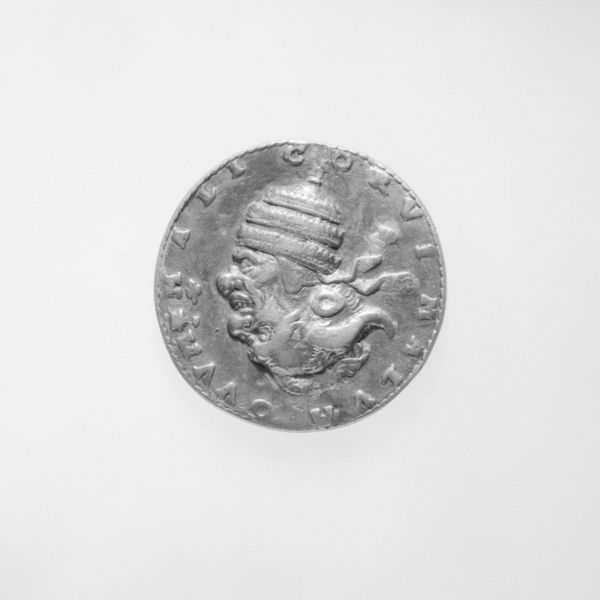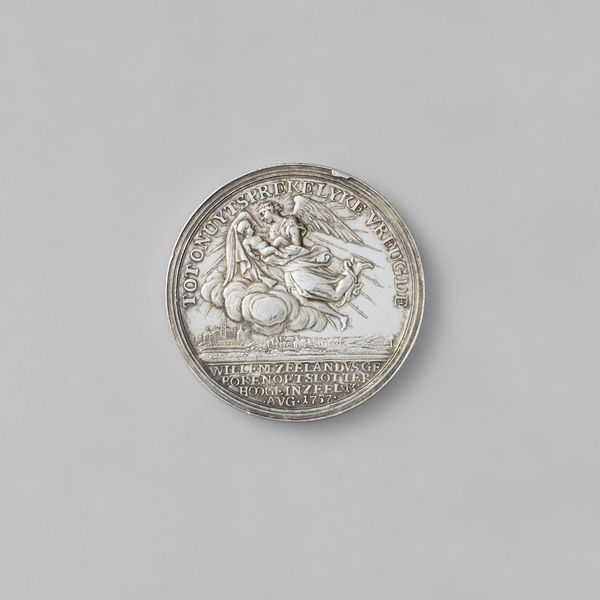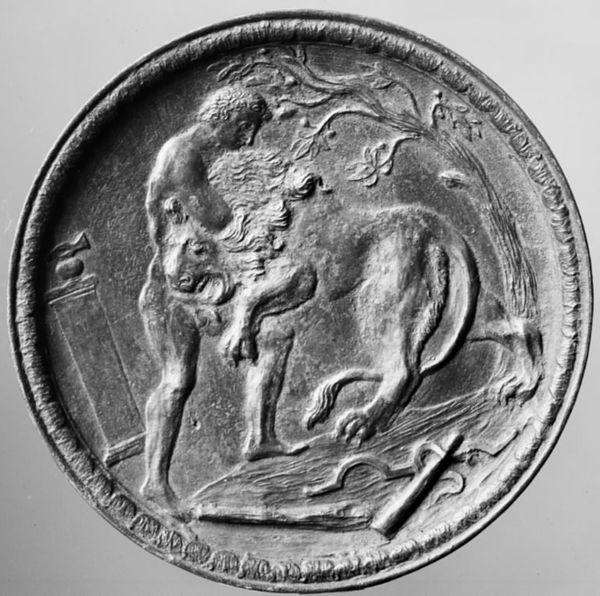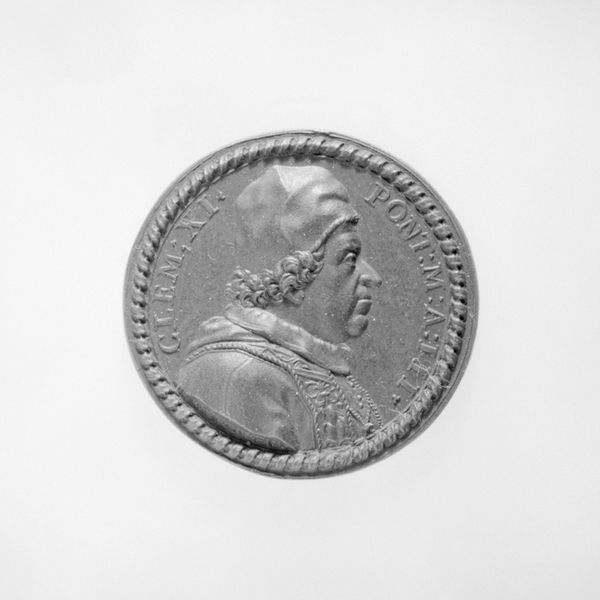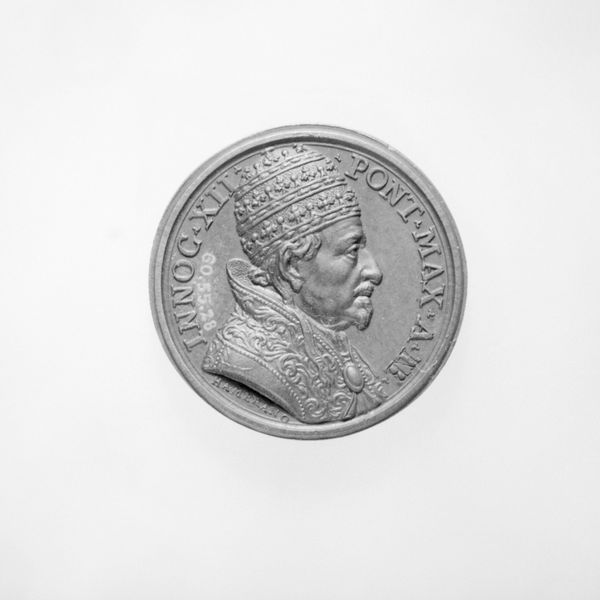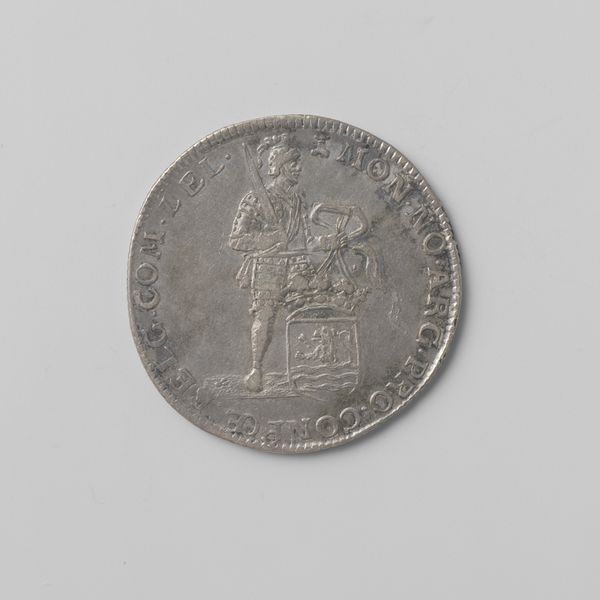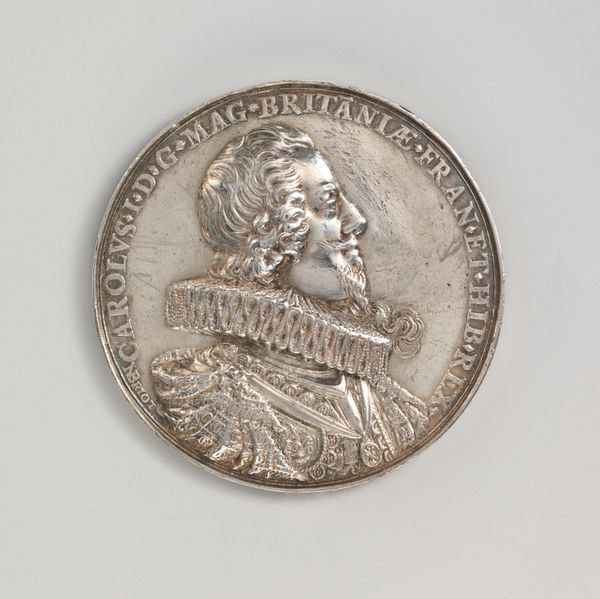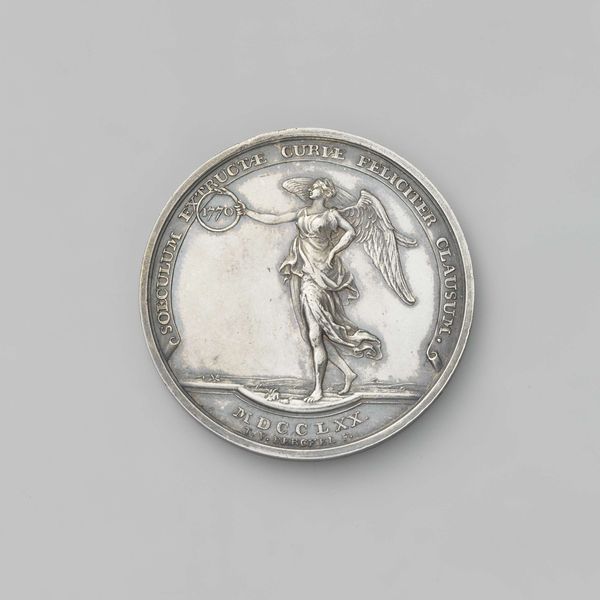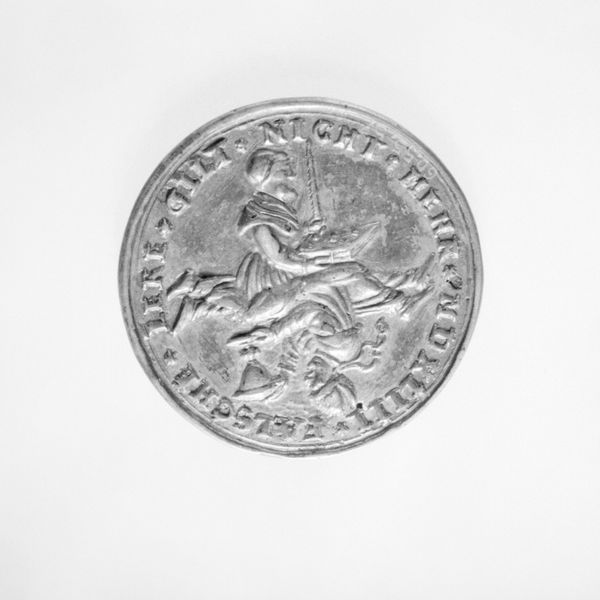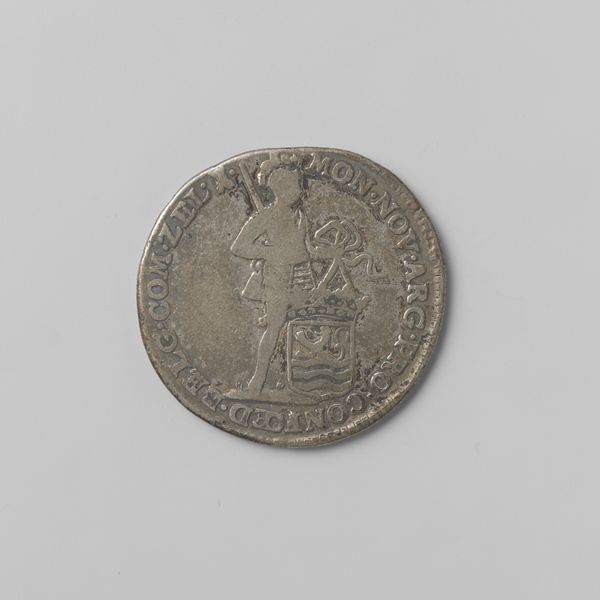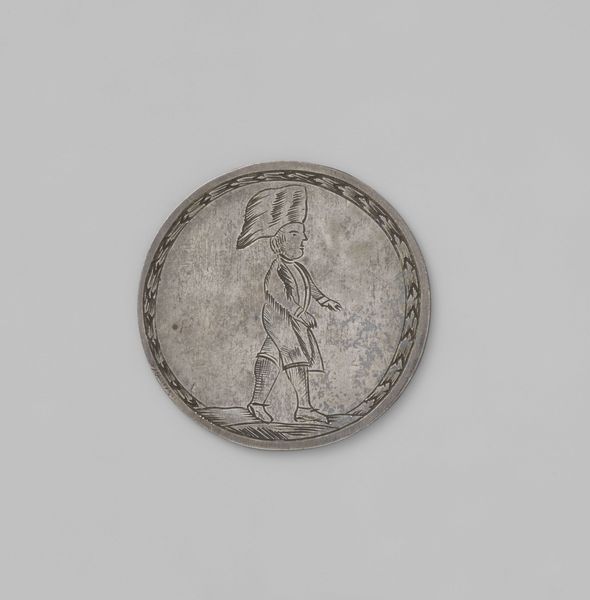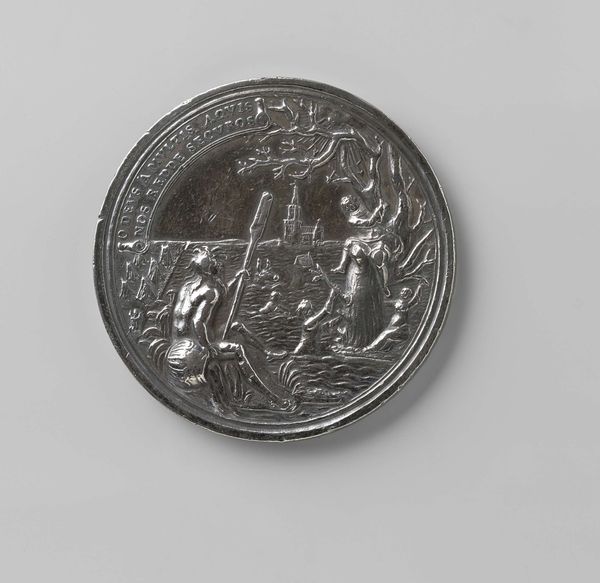
Mary of Austria (born 1505, Queen of Hungary and Bohemia 1522, Governess of the Netherlands 1530–56) 1530 - 1599
0:00
0:00
carving, metal, sculpture
#
portrait
#
medal
#
carving
#
metal
#
11_renaissance
#
portrait reference
#
sculpture
#
carved
#
history-painting
#
decorative-art
#
italian-renaissance
Dimensions: Diam. 1 3/4 in. (44 mm.)
Copyright: Public Domain
Editor: This metal carving, "Mary of Austria," dating between 1530 and 1599 by Christoph Fueszl, is incredibly detailed. It's striking how such intricate details could be achieved on what must be a very small scale. What's your perspective on this portrait medal? Curator: It’s more than just a portrait, it's a statement about power and gender in the Renaissance. Consider Mary's position: a powerful woman in a world dominated by men, ruling the Netherlands during a tumultuous period. This medal isn't just a likeness; it’s carefully crafted propaganda. Editor: Propaganda? In what sense? Curator: Think about it: who commissions such a piece? It’s about crafting an image. The inscription surrounding her image reinforces her titles, establishing her legitimacy. Even the artistic style, reminiscent of classical portraiture, links her to established historical power structures. Can we see echoes of Roman Imperial portraiture here, with the suggestion of her as a powerful ruler? Editor: That's fascinating. I hadn't considered how consciously constructed her image would be. It makes you wonder what aspects of her real personality are being obscured. Curator: Exactly! These medals become tools, participating in the political and social dialogues of their time. It pushes us to think about how women of power navigated and negotiated their roles in history, challenging assumptions about agency. Editor: I guess seeing it just as a portrait of a queen misses so much of what it really represents. Curator: Absolutely! It makes you consider the agency in representations, and to consider the conditions and systems within which they were made.
Comments
No comments
Be the first to comment and join the conversation on the ultimate creative platform.
